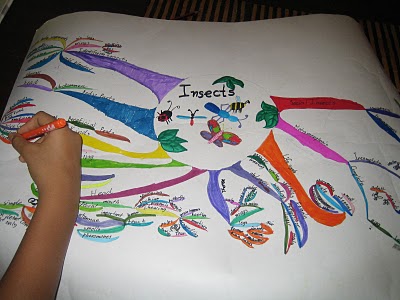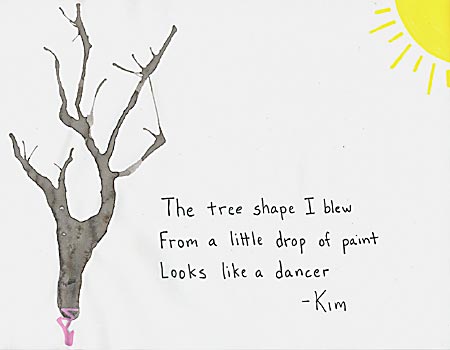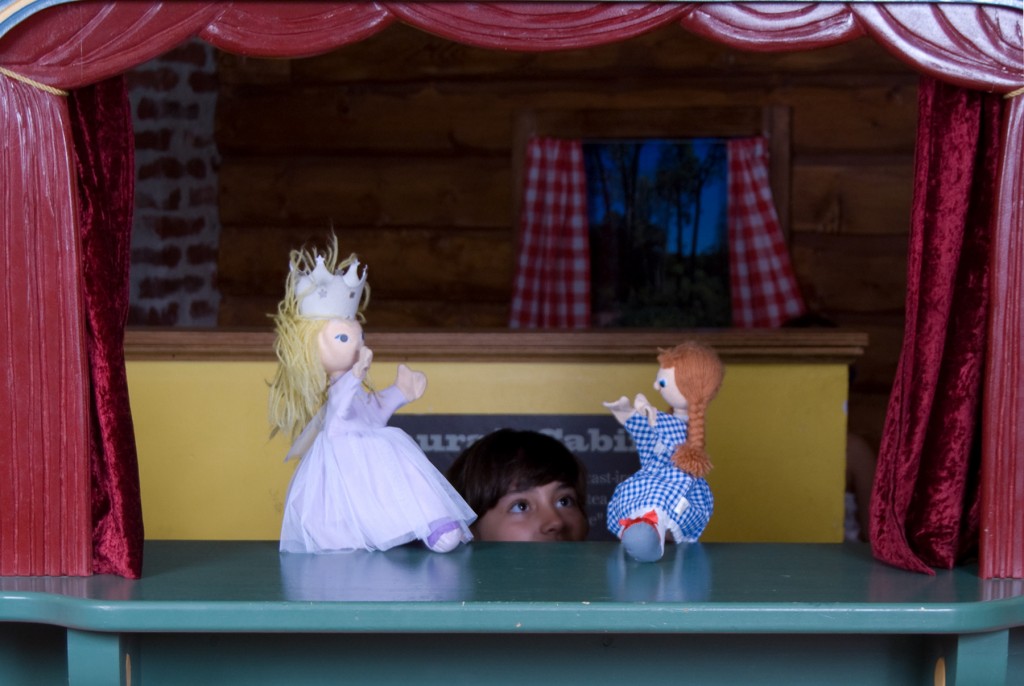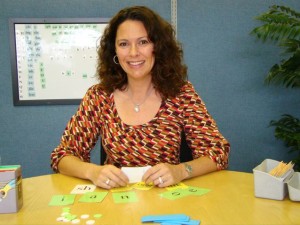
by PRIDE Reading Program Admin | Jun 23, 2016 | A PRIDE Post, Writing Skills
The best way to help your child become a better writer is to separate the mechanics of writing (grammar, punctuation, handwriting, spelling) from the creative part. Your child’s strength is in his vivid imagination – an important asset in all writers. Help your child learn that writing is a two-stage process: the first stage is getting the ideas on paper; the second step is correcting or editing the work.
When writing the first draft of an essay or story, encourage your child to write things down in whatever form or order he is comfortable with. Once those ideas are in a written form, you can guide your child to developing a more polished version. If your child is very young, you will have to give a lot of help, but as he grows older, he will learn to do more for himself. Keep in mind that even professional writers hire editors to proofread and correct their work!
MIND MAPPING
A good technique for getting ideas to flow on the paper is to use mind-mapping. Your child will start with a main idea and then write down a few words or will draw a picture representing the idea in the middle of a blank sheet of paper. He will then draw lines that go out from the center for each main idea he has about the subject. At each line he should write a few words or draw a picture. He can also add details to each idea by writing even more words and connecting them with a line to the idea they relate to.

Once the ideas are written down in this mind mapping format, you can help your child develop them into written sentences, using the child’s map as a guide for developing the structure of his paragraph or essay.
POETRY
Introduce your child to poetry or verse. Try using free verse-poetry that does not have to have a particular rhythm or cadence, and does not have to rhyme. One of the advantages of writing poetry is that it frees the child from writing conventions, such as the need to use complete sentences. It also allows your child to experiment with the sounds of words and to use new words that are evocative of a particular mood or feeling.
Your child might enjoy writing haiku, mostly because it is short. Haiku traditionally has three lines consisting of seventeen syllables in total, usually arranged in lines of five, seven, and five syllables. Although the form is very brief, writing haiku will help your child develop sensitivity to the phonetic structure of word segments.

Another fun form of poetry is to make a slideshow poem. You can have your child take 5 or 6 photographs based on a theme (a recent trip, a family member’s life). Import the pictures into a software program such as PowerPoint or iPhoto and have the child write a poem based on the pictures by posting a word or two with each photo image. Make it really fun by adding special effects, transitions, or music to spice up the slideshow poem.

Teach your child how to write an acrostic poem. This is where the first letter of each line spells out his name when read from top to bottom. Once the child writes a poem based on his name, then he can write about family members, pets and friends.

PLAYS
You might also encourage your child to write a play, it is sometimes easier for the reluctant writer to focus only on the dialogue among the characters. Your child might enjoy presenting his play as a puppet show or using a video camera to make his own movie using his own written screenplay.

Writing, like reading is one of those tasks that will only improve through a lot of practice. Set up a designated writing area somewhere in your home and have writing material available to your child at all times. This includes markers, pencils, pens, and crayons, as well as coloring books, paper, and journals. Provide lots of writing opportunities for your child and above all – keep it fun!
_______________________________________________________________________________________
Karina Richland, M.A. is the Founder and Director of PRIDE Learning Centers, located in Los Angeles and Orange County. Ms. Richland is a certified reading and learning disability specialist. Ms. Richland speaks frequently to parents, teachers, and professionals on learning differences, and writes for several journals and publications. You can reach her by email at karina@pridelearningcenter.com or visit the Pride Learning Center website at: www.pridelearningcenter.com

by PRIDE Reading Program Admin | Jun 5, 2016 | A PRIDE Post, Reading Fluency
Once a child is able to decode and recognize words in print, it is crucial that they also gain an ability to read smoothly and fluently. Stumbling and hesitating over words will undermine reading comprehension because by the time the child gets to the end of a sentence he or she will have completely forgotten what was at the beginning of the sentence!
How do you measure reading fluency in your child?
- Ask the child to read a grade level passage that they have never seen or read before.
- Using a timer have him or her read this text for one minute.
- While reading the passage, tally the errors the child makes while reading.
- Stop the child after one minute. Count the number of words read in the minute and subtract any errors made by the child. For example: if he or she read 120 words in a minute and made five errors then the child’s reading fluency rate is 115.
- Use the chart below to determine if your child’s reading rate is on target.
Mean Words Correct Per Minute “Targets” for Average Students in Grades One through Eight
| Grade | Fall Target | Winter Target | Spring Target |
| | | |
| 1 | Not applicable | 20 | 50 |
| 2 | 50 | 70 | 90 |
| 3 | 70 | 90 | 110 |
| 4 | 95 | 110 | 125 |
| 5 | 110 | 125 | 140 |
| 6 | 125 | 140 | 150 |
| 7 | 125 | 140 | 150 |
| 8 | 130 | 140 | 150 |
Johns, J. and Berglund, R. (2006). Fluency strategies and assessments. Dubuque, IA: Kendall/Hunt Publishers.
How do you determine a child’s reading level to test for fluency?
Probably the easiest ways to determine if a book is at an appropriate reading level for your child is the Five Finger Rule. Have the child begin reading a chapter, and put down one finger each time he struggles with a word. If he reaches the end of the page before you get to five fingers, the book is written at a comfortable level for independent reading.
What can you do to increase and improve your child’s reading fluency?
The very best way is through practice, both through oral and silent reading.
One approach to practicing reading fluency is for the child to repeatedly read the same passage or text either with a parent or teacher three to four times. Rereading text gives the child multiple opportunities to read unfamiliar words. After repeated reading, those words become familiar. The child should practice rereading aloud texts that are reasonably easy for them and at their reading level and include words that the child already knows and can decode easily. A text is considered at reading level if the child can read it with 95% accuracy. This text should also be relatively short consisting of 50-200 words. First, the parent or teacher reads the text aloud to the student. Then the student reads the same passage to the adult or chorally with the adult. Finally, the student rereads the passage again independently.
Reading frequently will also improve reading fluency since reading is a skill that improves with practice. Children can improve their reading fluency by reading independently each day for at least 20 minutes. Again it is important that the child read a book or text that is at their grade level or slightly below their grade level. Children should be encouraged and allowed to read a book of their choice – even if this doesn’t involve classic novels for their independent reading. For gaining fluency, quantity is more important than quality. Whenever possible, use their interests to guide their reading choices and give them some power in making decisions about what to read.
Memorizing Dolch sight words is another method to improve reading fluency in children. By memorizing common words like “the”, “said”, “what”, “you”, the child will read texts and stories more fluently. Many of these words are in almost anything they read. Readers will have more experiences of success if they know these words. Dolch words are service words; they give meaning and direction, which are necessary for understanding sentences.
Model good reading for your children. Share what you read with them or read what they are reading. Have discussions and talk to them about the things you find important in what you read and why. Parents and teachers need to read themselves and read in front of their children and students. Children will imitate you and will be more likely to read and read well in a house and classroom filled with all kinds of interesting books, magazines and texts.
Learn more about the New PRIDE Reading Program
___________________________________________________________________________________________
Karina Richland is the Founder of Pride Learning Centers, located in Los Angeles and Orange County. Ms. Richland is a certified reading and learning disability specialist. Ms. Richland speaks frequently to parents, teachers, and professionals on learning differences, and writes for several journals and publications. You can reach her by email at karina@pridelearningcenter.com or visit the Pride Learning Center website at: www.pridelearningcenter.com

by PRIDE Reading Program Admin | May 26, 2016 | A PRIDE Post, Reading Comprehension
Is your child having difficulties with reading comprehension? Need a reading comprehension strategy that helps your child understand what they have just read?
Well, try using the SWBS reading comprehension strategy. It is our favorite reading comprehension strategy.
Somebody – Wanted – But – So
The SWBS is a fantastic and easy to implement reading comprehension strategy that helps children understand plot elements such as conflicts and resolutions. It also allows the child to summarize the elements of a story and develop the summary into a retelling of the story. It can be used as a “during reading” or “after reading” strategy. I also like to use it as a quick reading comprehension assessment with my students.
The SWBS reading comprehension strategy is basically a summarizing technique. Summarization requires a student to pull out the main idea, focus on key details, use key words and phrases, and break down the larger ideas. Summarizing is an extremely difficult task for most students. Many children require instruction and practice in summarizing before they are able to produce good oral and written summaries of text. The SWBST strategy helps children first orally summarize what they have read and then put the summary down onto paper into paragraph form. It works with both fiction and nonfiction text. So here is how it goes:
Somebody – Wanted – But – So
Procedure:
1. Have your child read a story (independently or with help is fine)
2. Write down the following:
Somebody…
Wanted…
But…
So…
3. Fill in the sentences together with your child relating to the story that they just read. Somebody relates to the character of the story. Wants is the goal or motivation that the character exhibits. But refers to the conflict in the story. So is the resolution of the conflict. Do it first orally then in written form.
4. Have your child write out the sentences in a paragraph form. Younger students can add just one sentence while older students can add detail with 1-3 sentences.
It is AWESOME – right? The key to getting your child to memorize this summary form is through repetition. Doing it just one time won’t work. Doing it all year long – it will “stick.” Good Luck and let me know how it goes…

Learn more about the New PRIDE Reading Program
___________________________________________________________________________________________
Karina Richland, M.A. is the Founder and Director of PRIDE Learning Centers, located in Los Angeles and Orange County. Ms. Richland is a certified reading and learning disability specialist. Ms. Richland speaks frequently to parents, teachers, and professionals on learning differences, and writes for several journals and publications. You can reach her by email at karina@pridelearningcenter.com or visit the PRIDE Learning Center website at: www.pridelearningcenter.com

by PRIDE Reading Program Admin | May 22, 2016 | A PRIDE Post, Reading Skills
School is finally out and now is the time for splashing in the pool, running in the yard, playing at the park and relaxing with friends. Summer is also the time to catch up and get ahead in crucial reading skills that might be lacking during the school year. Children who read during the summer months gain reading skills, while those who do not often experience reading losses.
Trying to balance the busy, physical activities that the warm summer weather brings with quiet reading time daily is not an easy task for most parents. Some children welcome the idea of reading books and keeping up with their reading skills during the summer months, while others, particularly weak or reluctant readers, will find this a tedious chore.
Try some of these tips to make sure your child’s summer reading skills goes smoothly:
- Set aside a consistent time each day for reading. Summer camps, play dates, and technology are all fun things kids like to do during the summer. However, by the end of the day, children may be too tired to pick up a book and read. When planning summer time activities for your child, remember to leave some time in their schedules for reading. Find a convenient time each day – before bedtime or over breakfast.
- Offer an incentive program. Keep track of the minutes spent reading and then every couple of weeks the child can choose a “fun activity” as a reward. Many libraries also offer online sign ups for summer reading programs. Children can keep track of the books they read and win stickers, prizes and other incentives.
- Help your child select books at a comfortable level. If you are having trouble judging, consult your local librarian who is likely to be an expert in matching books to reading levels.
Another great source is the Lexile Framework for Reading. This website will give you a Lexile Measure from a reading test. You can then look up books according to your child’s lexile measure. The website is: www.lexile.com.
If your child makes 5 or more errors in reading a page of around 50 words – the book is too challenging.
- Become a reader yourself and lead by example! Read the news on your iPad, pick up a magazine at the doctor’s office, and take a book to the beach or on your family picnics. If kids see adults around them reading often, they will understand that reading can be a fun and important part of their summer days.
- Read about your vacation destination before you go. Have your child read about your travel spots ahead of time and help plan the trip for you. If you go camping, explore the wildlife and scenery on-line.
- Make sure to bring books on vacation, outings and errands to keep your children occupied and entertained with great stories. Pack books in your beach bag and picnic baskets instead of electronic game devices.
- Connect books with activities! Read a story that mentions something yummy to eat and then try out a recipe at home. Try some exotic foods from stories from other countries.
Karina Richland, M.A. is the Founder and Director of Pride Learning Centers, located in Los Angeles and Orange County. Ms. Richland is a certified reading and learning disability specialist. Ms. Richland speaks frequently to parents, teachers, and professionals on learning differences, and writes for several journals and publications. You can reach her by email at karina@pridelearningcenter.com or visit the Pride Learning Center website at: www.pridelearningcenter.com

by PRIDE Reading Program Admin | May 8, 2016 | A PRIDE Post, Reading Skills
It is critical to identify a child’s reading problems before he or she fails. Even some children whom one might suspect do not need early assessment and monitoring should have it just the same. Some exceptionally bright children, for example, may learn to read early on and just skip over learning phonologic skills. These children memorize a lot of words very easily and quickly build a large reading vocabulary. Because these children are simply memorizing words without learning how to analyze them and break them apart, invariably there will come a point in time when they cannot decipher new, relatively long words, especially technical words, as in the sciences (Herbivore, Polynomial, Photosynthesis), or names of people or places in history or around the world (Picasso, Timbuktu, Kathmandu).
Without a foundation in phonological skills, these children will not have any strategies to deal with them. It is therefore best to ensure that all children’s basic phonologic skills are assessed right at the beginning and that they receive early and intensive instruction if necessary.
Here is a checklist to help you determine where your child is on the path to reading by the end of kindergarten.
- Knows that spoken words come apart and that letters represent these sounds.
- Easily names the letters of the alphabet, both uppercase and lowercase.
- Writes the letters of the alphabet.
- Can sound out the letters of the alphabet – both uppercase and lowercase.
- Can decode simple sound matches.
- Can decode simple 3 and 4 letter words.
- Uses invented spellings.
- Recognizes some common sight words.
- Knows about print conventions – reading from left to right, from the top of the page to the bottom.
- Has a growing vocabulary
- LOVES to read and looks forward to reading out loud.
First grade is one of the most important for a child on the road to reading. This is the crucial year where hopefully your child has broken the reading code. First grade builds on the foundation provided in kindergarten. Most children enter first grade ready to read. They leave first grade as “real readers.” Keep in mind that these major accomplishments don’t occur by chance; they are only made possible by well -structured and systematic reading instruction. If your child has the above-mentioned skills, then he or she is off to a running start in reading!
Learn more about the New PRIDE Reading Program
________________________________________________________________________________________________________

Karina Richland, M.A. is the Founder and Director of Pride Learning Centers, located in Los Angeles and Orange County. Ms. Richland is a certified reading and learning disability specialist. Ms. Richland speaks frequently to parents, teachers, and professionals on learning differences, and writes for several journals and publications. You can reach her by email at karina@pridelearningcenter.com or visit the Pride Learning Center website at: www.pridelearningcenter.com

by PRIDE Reading Program Admin | May 1, 2016 | A PRIDE Post, IEP
Summer is just around the corner! Before heading to the beach, here are a few tips to help close out the end of the school year IEP and plan ahead for September’s IEP.
Tip 1: Collect Your Child’s Work Samples
Your child’s teacher is probably busy cleaning out the classroom. This is a perfect time to collect work samples, such as writing journals; completed consumable workbooks (Language Arts, Math); artwork; and work samples that the teacher may have saved in a personal or portfolio file. This information will come in handy to measure progress (or regression) over the summer and the next school year.
Tip 2: Ask for the Raw Data for the Report Card and IEP Goal Progress Report
Your child’s Report Card and IEP Goal Progress Report contain general statements about achievement (e.g., “Partially Proficient – Sometimes Meets Standards” or “Progress has been met towards the goal”). It is important to ask for the actual raw data that the staff relied on to reach conclusions about your child’s progress.
Tip 3: Request a Complete Copy of Your Child’s School Records
Summer is a perfect time to organize your child’s file. This is especially true if you plan on consulting with professionals over the summer. In California, a school district must provide a parent with a copy of their child’s school records within five business days of a parent’s request. Since a child’s school may be closed during the summer, a parent should contact the District Office to request a copy of records.
Tip 4: Consult with Professionals to Discuss IEP Concerns
If you have concerns about your child’s IEP and are thinking about consulting with a private assessor, an advocate or an attorney, it is a good idea to schedule appointments during the early summer plan instead of waiting until late summer or early Fall. It takes time to search for professionals, schedule appointments, gather records, analyze files, conduct assessments, prepare reports, discuss recommendations, and implement strategies.
Tip 5: Submit Request for IEP Meeting
If you need to meet with the IEP Team in early September, then it is a good idea to submit your written request before the end of the school year. In California, an IEP Meeting must be scheduled within 30 calendar days from the school’s receipt of a parent’s written request. However, there is an exception to the 30-day timeline: a district does not need to count the days between regular school sessions (e.g., the summer break). If you submit your written request at the beginning of June, then the countdown will start in June, stop during the summer break, and start again when school is back in session. The early bird catches the worm!
Tip 6: Measure Your Child’s Levels of Performance Before and After Summer
A child with an IEP may be eligible for special education services during the summer, commonly referred to as “Extended School Year” (ESY) services. Decisions about the intensity and duration of ESY services should be based on reliable data. Parents are in an excellent position to observe the extent to which their child’s levels of performance vary with instructional breaks over the summer (e.g., the end of June to the beginning of September). Parents can gather data or work with an educational consultant to measure progress or regression. A logical source for data is the child’s performance on his or her IEP goals and/or benchmarks.
Learn more about the New PRIDE Reading Program

Caroline A. Zuk, Esq., is a former special education advocate and attorney for children. She has nearly 30 years of combined experienced as a special education teacher, diagnostician and attorney.
Page 7 of 18« First«...56789...»Last » 












